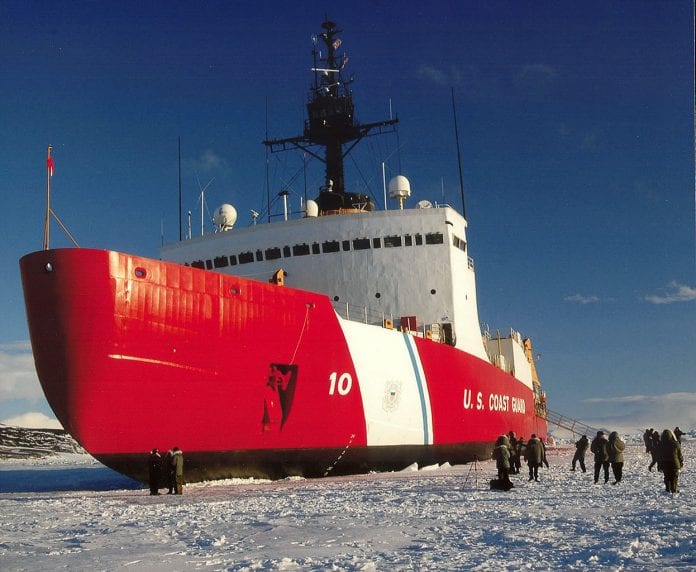
Bipartisan legislation authorizing six polar icebreakers has passed both houses of Congress in the Elijah E. Cummings Coast Guard Authorization Act of 2020, part of this year’s National Defense Authorization Act.
The legislation was backed by Senators Dan Sullivan and Lisa Murkowski, both R-Alaska, Maria Cantwell, D-WA, and Roger Wicker, R-MS.
Authorization of the new Polar Class icebreakers this year will put America in a much better position to operate in the region and protect our national security and economic interests, said Sullivan, who chairs the Senate Commerce Subcommittee on Security.
The Alaska Republican got a commitment from Coast Guard officials during a recent subcommittee hearing for improved communications with Alaska’s commercial fishing fleet after Russian war games in the U.S. Exclusive Economic Zone of the Bering Sea in August interfered with legal U.S. commercial fishing operations.
“We’ve seen Russia push all in on controlling the Arctic,” Sullivan said, in a statement issued after the subcommittee hearing. “Without persistent U.S. presence in the Arctic, we risk leaving an opening for these types of aggressive actions to continue.”
“The reality is there is a race on for the Arctic passageway and we need to be ready,” said Cantwell. “This formal authorization of six polar icebreakers will send a strong message to the rest of the world: The United States is showing up In the Arctic.”
And with three of those icebreakers to be homeported in Washington state, there is opportunity for us to continue to pave the way in Arctic exploration, scientific research, and protecting our nation’s foreign policy interests, she said.
Icebreakers are considered critical for protection of U.S. interests in polar regions, for gathering data for scientific research and responding to oil spills in very remote areas. As climate change has increased the melting of Arctic sea ice, they are also increasingly important to securing and protecting U.S. commercial interests and decreasing transit times for cargo.
The U.S. has two polar icebreakers, Polar Star and Healy, but in the wake of a fire on board the Healy this past summer, the Polar Star is the nation’s only operational icebreaker.
Russia has 53 icebreakers Canada has seven, Finland has 10, Sweden has seven and Denmark has four.














